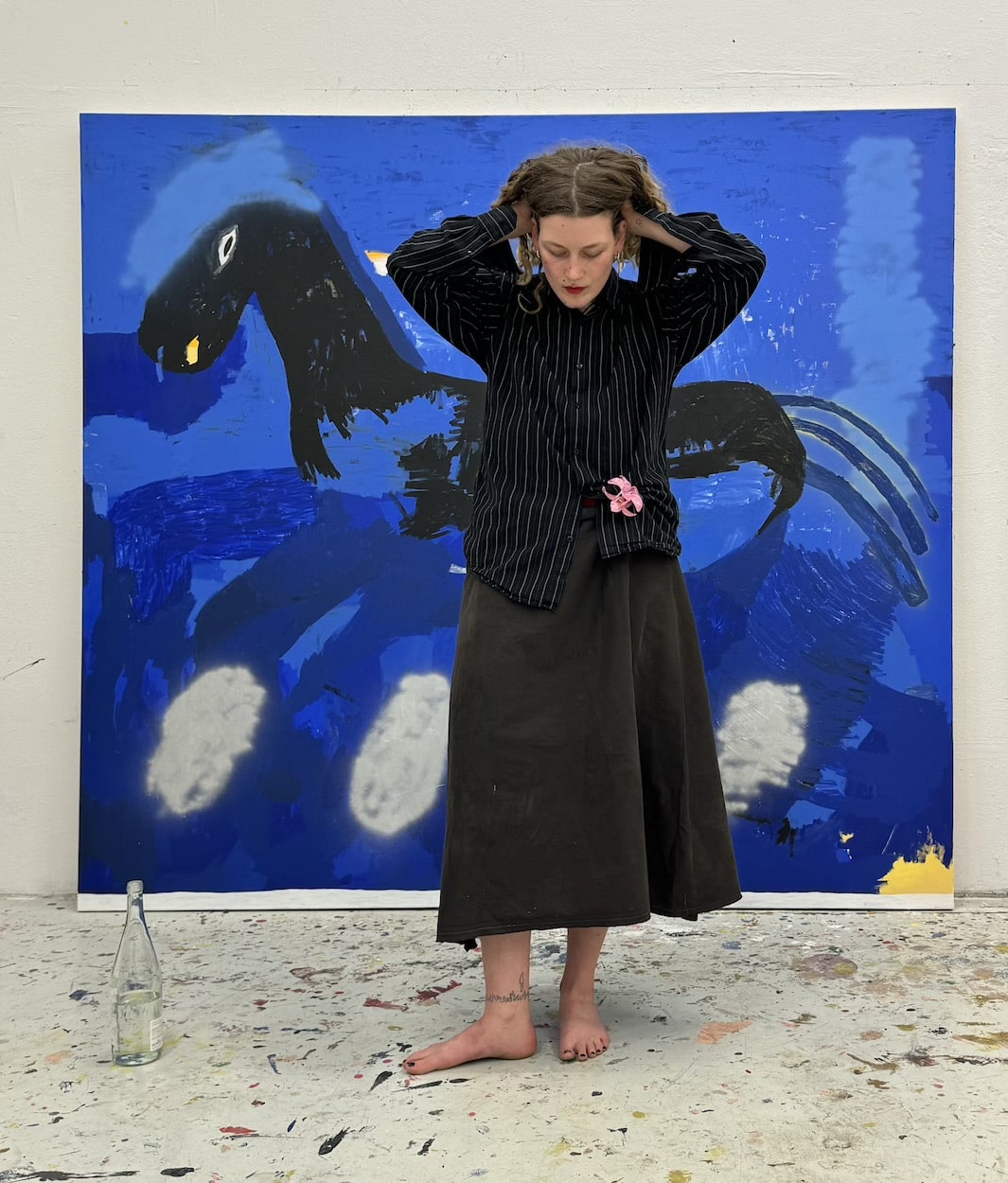
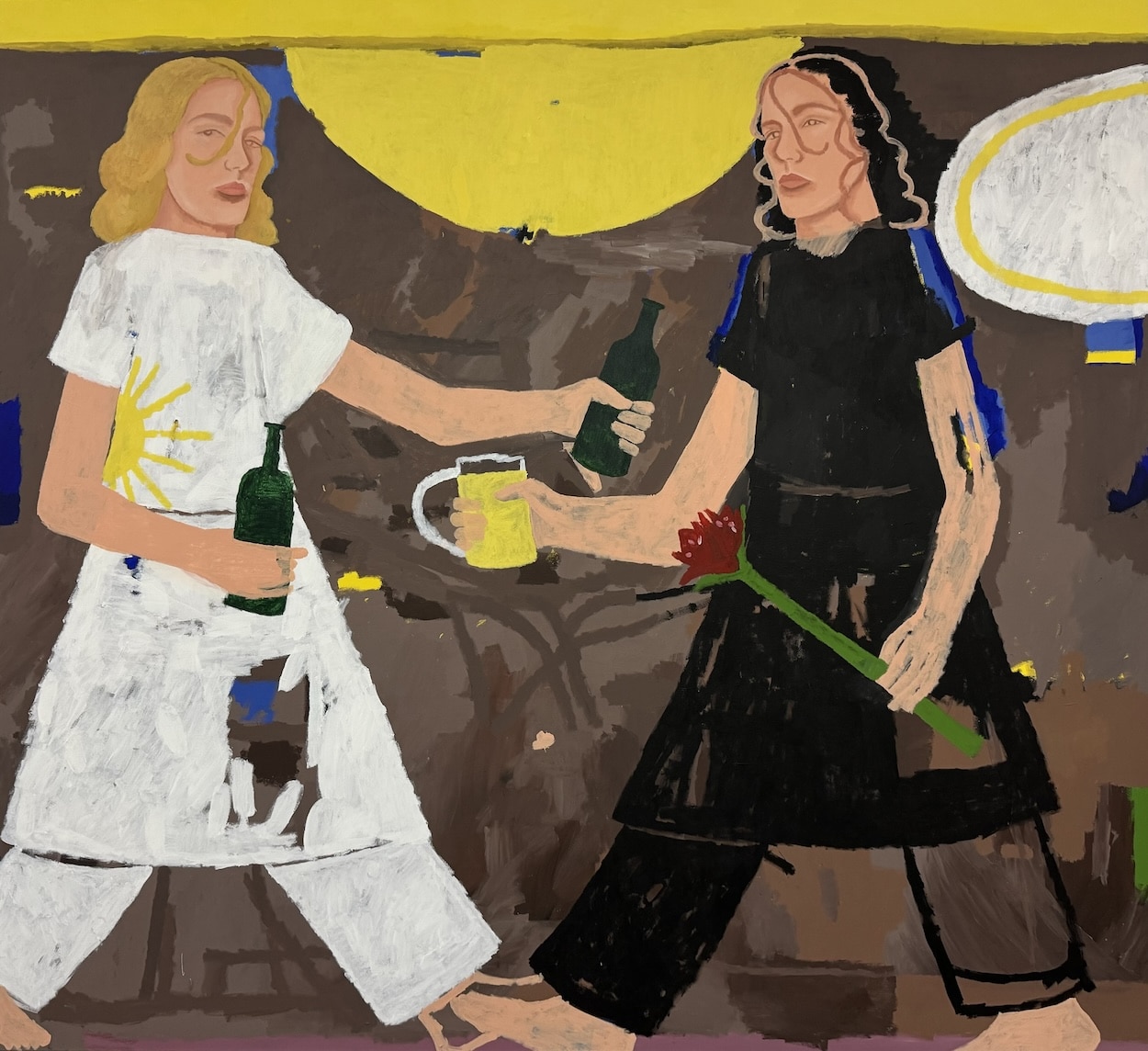

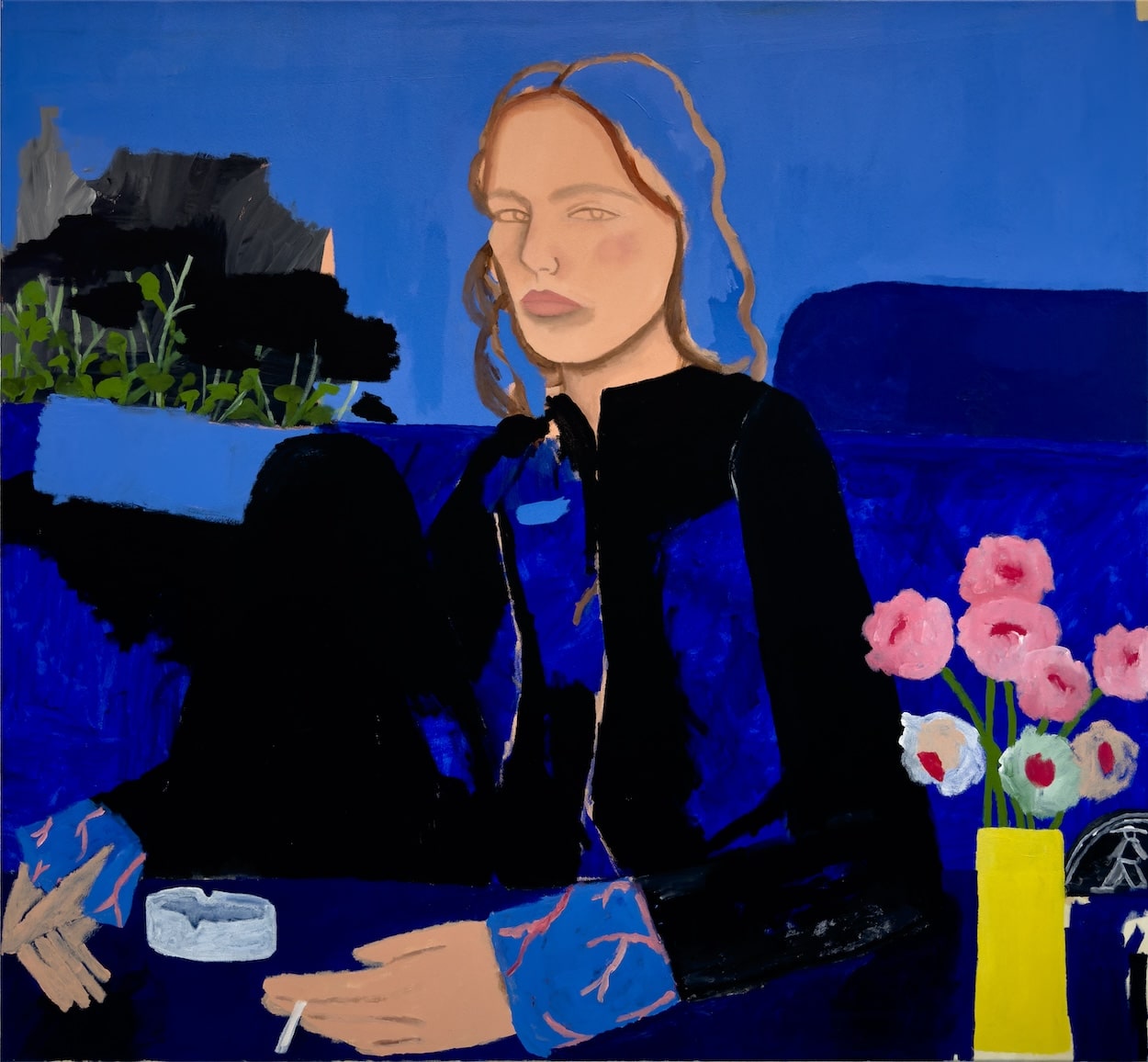
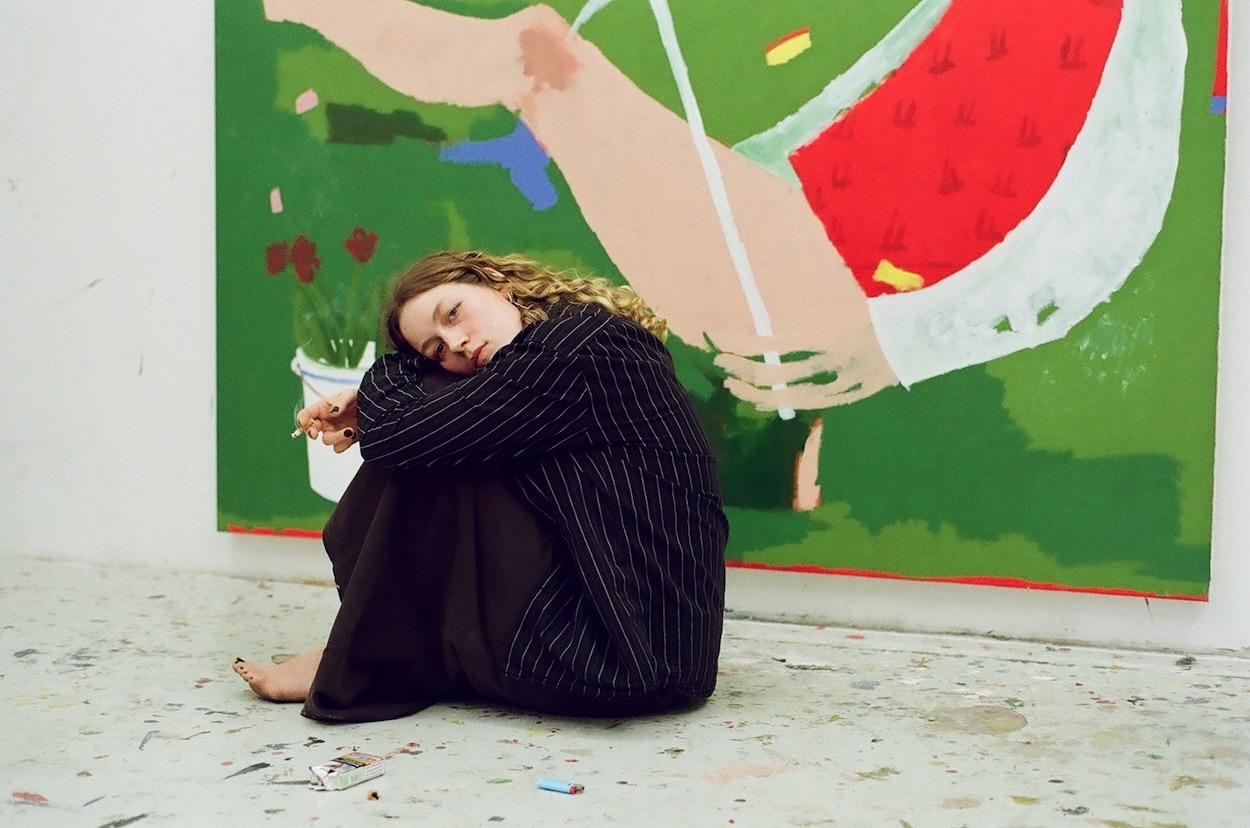

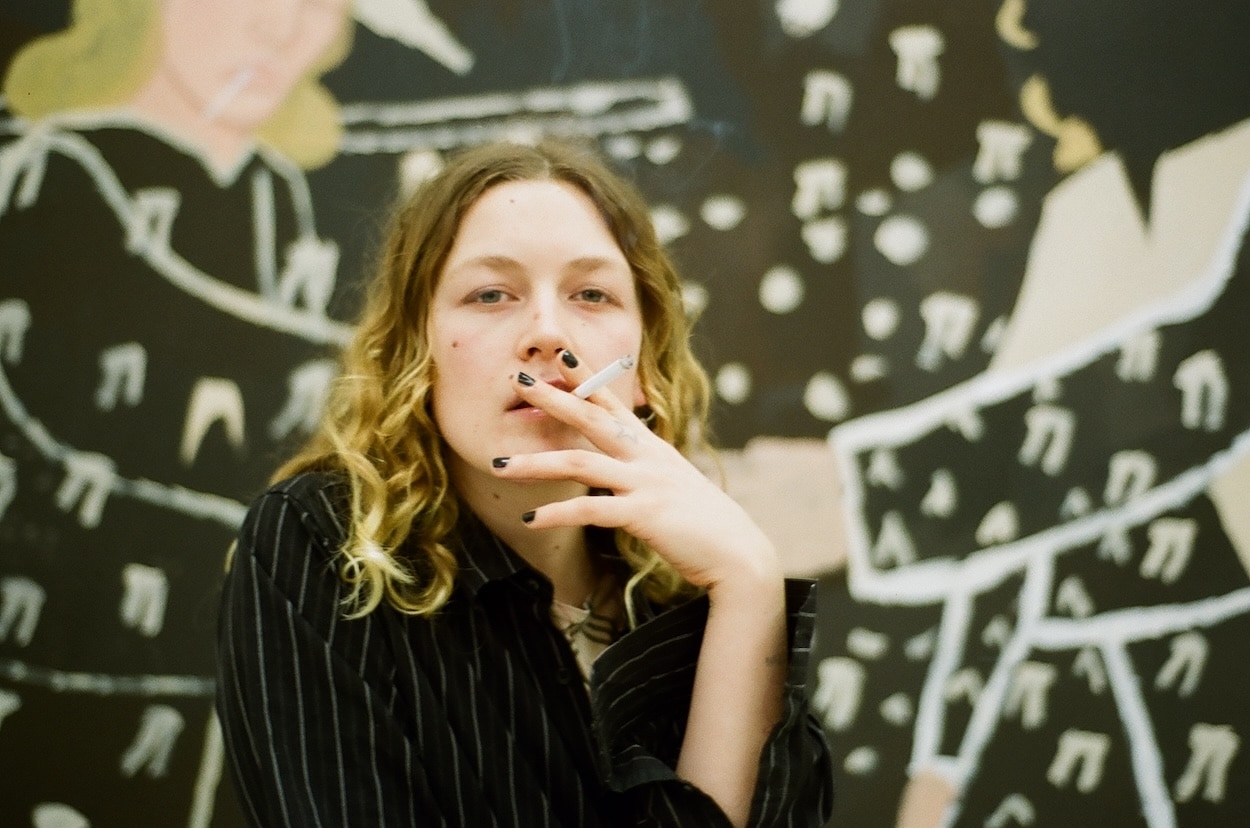
Layers of (Paint) the Present: An interview with Lunita July-Dorn
From all directions, the same piercing pair of eyes stare back. Sometimes surrounded by abstract, sometimes by concrete elements: teeth, flowers, suns, wings, books, cigarettes. Very often cigarettes. The young woman to whom these piercing eyes belong remains a compositional constant in Lunita July-Dorn’s paintings. This woman is herself. But these paintings are not self-portraits. While visiting her Berlin studio — where only six paintings are present — we are interrupted multiple times. How everything connects, the painter explains herself.
Lunita July-Dorn: In Bonn, in Vienna, somewhere on the road, or in storage. Several works have been part of an exhibition at Galerie Judith Andreae, other and new works are being part of the Spark Art Fair next weekend. I usually work on multiple pieces at once, and they’re often out in the world before I’ve fully let them go. It’s almost as if the paintings move on by themselves, sometimes before I even consider them ‘finished.’ That might actually be a good thing — maybe it means they have their own energy, their own necessity to exist beyond me.
LJD: In a way, yes. As a child, I drew everywhere — on walls, cupboards, even bunk beds. My parents allowed it, sometimes painting over it, sometimes cutting sections out and keeping them. I liked that sense of freedom, the idea that I could shape my surroundings. But the road to painting wasn’t direct. I first trained in fashion design, then in upholstery, but neither truly suited me. The discipline of fashion felt too structured. I loved working with materials, crafting something tangible — but it wasn’t my medium. Eventually, I applied to an art school — and it worked out. That’s when I realized I needed a language that didn’t have to be functional. Painting was, from the start, a way to shape my thoughts without following rules.
LJD: It often starts with a phrase, a sentence, a feeling. Sometimes I have a title before I have a composition or motive. I take a lot of notes — sometimes even entire bar conversations I overhear. I don’t write them down to reproduce them exactly, but to capture a moment. Words stay with me longer than images sometimes. Then I mix that with colors I discover by chance. When I buy paint, I always pick a color I’ve never used before — to surprise myself. I don’t plan compositions. I start directly on the canvas, and the painting unfolds. Sometimes I think the painting knows better than I do what it wants to be. I just have to listen. I often start with a deep blue as a foundation, and by the end, it’s completely gone. I might have a vague idea at first, but in the end, the painting is always smarter than me. I also experiment a lot with different materials — sometimes I incorporate linocut prints, sometimes handwritten text, sometimes layers of glaze that create a strange depth. I like to allow things to emerge naturally.
LJD: Because it’s not about me as a person. Yes, I’m the subject, but it’s more than that. It’s about emotions, about states of being, about an alternate self — sometimes distorted, sometimes alienated. I can depict myself as an angel, or as a dark figure, or as someone shaking hands with themselves. I use my own image like a canvas. It carries something, but it’s not the theme. I think it’s more about identity than representation. Sometimes I see these figures as characters I play or as inner voices that I make visible. In a way, it’s a projection, but not a classic self-portrait. I find it more interesting to show identity as something shifting, something elusive. I love when viewers see something beyond me in the paintings. It’s strange, really — I’m so present in the work, yet I’m not the point.
LJD: Completely. I think my paintings are a conversation with myself. I often paint while asking myself questions I might not otherwise consider. I notice that certain thoughts keep returning. I believe emotions are universal — everyone experiences joy, fear, doubt — which is why people connect with the work. Sometimes it happens unexpectedly. A painting I made while feeling sad might mean something entirely different to someone else. That’s beautiful. I love the idea that art isn’t fixed, that it continues to exist in the thoughts of others. Also, emotions influence how I physically work — I paint differently depending on how I feel. Some days I work slowly, layering delicate details. Other days, I paint aggressively, covering entire sections, erasing, scraping away. The process itself reflects my emotional state.
LJD: Probably just that I exist in this time. I don’t think much about the art market or trends. I want my paintings to remain emotionally open, to affect people even if they don’t know why. I love when people say they feel connected to the work but can’t quite explain it. That means it’s working. I’m fascinated by what lingers — what images burn themselves into memory and why. I think it has a lot to do with what remains unsaid. Maybe the things we can’t quite name are the ones that stay with us the most. I also think a lot about time — how paintings can feel outside of it. Some of my works could belong to any decade, but then I add small, contemporary details — like a cigarette, a sneaker, a reference to a song lyric. These tiny moments anchor them in the present. I think that’s what makes something contemporary: not just being made now, but somehow reflecting the feeling of now.
The work of Lunita-July Dorn will be on display at Spark Art Fair in Vienna from today, March 21, until March 23, 2025.